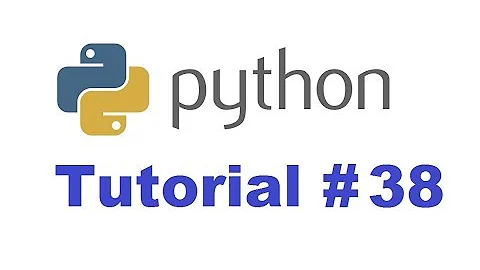How to use "raise" keyword in Python
Solution 1
It has 2 purposes.
jackcogdill has given the first one.
It's used for raising your own errors.
if something:
raise Exception('My error!')
The second is to reraise the current exception in an exception handler, so that it can be handled further up the call stack.
try:
generate_exception()
except SomeException as e:
if not can_handle(e):
raise
handle_exception(e)
Solution 2
raise without any arguments is a special use of python syntax. It means get the exception and re-raise it. If this usage it could have been called reraise.
raise
From The Python Language Reference:
If no expressions are present, raise re-raises the last exception that was active in the current scope.
If raise is used alone without any argument is strictly used for reraise-ing. If done in the situation that is not at a reraise of another exception, the following error is shown:
RuntimeError: No active exception to reraise
Solution 3
It's used for raising errors.
if something:
raise Exception('My error!')
Some examples here
Solution 4
Besides raise Exception("message") and raise Python 3 introduced a new form, raise Exception("message") from e. It's called exception chaining, it allows you to preserve the original exception (the root cause) with its traceback.
It's very similar to inner exceptions from C#.
More info: https://www.python.org/dev/peps/pep-3134/
Solution 5
You can use it to raise errors as part of error-checking:
if (a < b):
raise ValueError()
Or handle some errors, and then pass them on as part of error-handling:
try:
f = open('file.txt', 'r')
except IOError:
# do some processing here
# and then pass the error on
raise
Related videos on Youtube
Capurnicus
Updated on July 23, 2022Comments
-
Capurnicus almost 2 years
I have read the official definition of "raise", but I still don't quite understand what it does.
In simplest terms, what is "raise"?
Example usage would help.
-
voithos over 11 yearsIt's known as
throwin some other languages. -
 alisa about 6 yearsI guess a relevant addition to this question: does
alisa about 6 yearsI guess a relevant addition to this question: doesraiseexits the function automatically or does one need toreturnafterraise?
-
-
Curtis Yallop over 10 yearsI typed that in and got "global name 'error' is not defined". To others new to Python, you need "raise Exception('My error!')". You replace "error" with your Exception name. A list of standard exceptions you can use is here: docs.python.org/2/library/exceptions.html
-
 P-Gn over 7 yearsNote that in python 3.x the new syntax is
P-Gn over 7 yearsNote that in python 3.x the new syntax isexcept SomeException as e: -
alpha_989 over 6 years@user1735003, what does the
as edo? How is it different fromexcept SomeException? -
Ignacio Vazquez-Abrams over 6 years@alpha_989: It lets you get the actual exception instance.
-
 alper about 4 yearsDuring re-raising and catching the exception to the top level. should I print the
alper about 4 yearsDuring re-raising and catching the exception to the top level. should I print thetraceon bottom call where error occurs or the most higher call? or it is recommend to doraise Exception("message") from eto carry the error tothe top level? -
 alper about 4 yearsWhen I follow this approach, is it recommended to print the trace on the bottom level where the error occurs, or at the highlest level to that catches the carried error?
alper about 4 yearsWhen I follow this approach, is it recommended to print the trace on the bottom level where the error occurs, or at the highlest level to that catches the carried error? -
Martijn Pieters about 4 years@alper: not sure what you are asking. If you are catching an exception in an
except ...:handler, the traceback will include the whole stack, from the point where your Python program started up to the place where the exception was raised. So it doesn't matter where in the stack your handler is located, really. If you need to re-raise the exception after handling, useraise, nothing else. -
Martijn Pieters about 4 years@alper:
raise Exception("message") from ereplaces theeexception with a new exception, but just a plainExceptioninstance carries no meaning. Ifewas aTypeErrororValueErrororLibrarySpecificExceptionyou can't now catch those specific exceptions anymore, because you replaced it withException.










